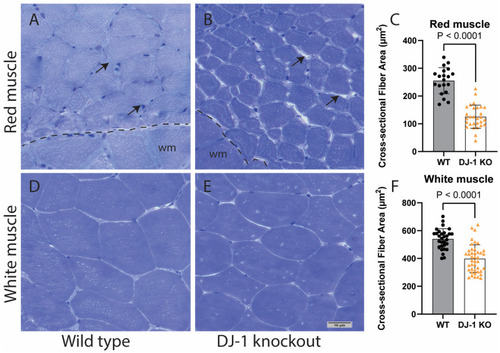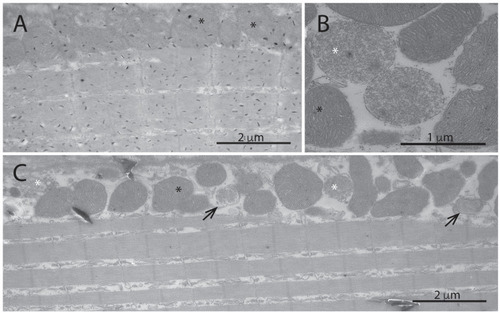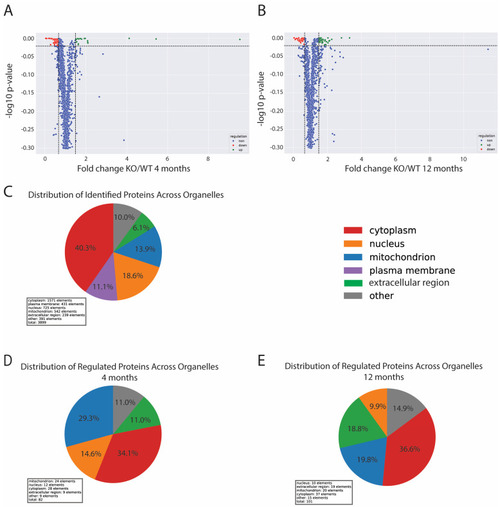- Title
-
Accelerated Sarcopenia Phenotype in the DJ-1/Park7-Knockout Zebrafish
- Authors
- Rostad, K.O., Trognitz, T., Frøyset, A.K., Bifulco, E., Fladmark, K.E.
- Source
- Full text @ Antioxidants (Basel)
|
Loss of DJ-1 induces muscle atrophy in zebrafish. Semi-thin cross sections of red ( PHENOTYPE:
|
|
DJ-1-knockout animals show a high degree of degenerating sub-sarcolemma mitochondria in red muscle. Figure shows transmission electron micrographs of red muscle from 18-month-old wild-type ( PHENOTYPE:
|
|
Changes in the muscle proteomes of early and late adults. Figure shows volcano plots of the distribution changes in 4-month-old ( |
|
Interaction networks of regulated proteins. ( |
|
Absence of DJ-1 facilitates an age-dependent decrease in muscle NAD+/NADH ratio. Metabolites were measured using targeted mass spectrometry on whole muscle from different age groups. A two-way ANOVA analysis was conducted on the ( PHENOTYPE:
|





